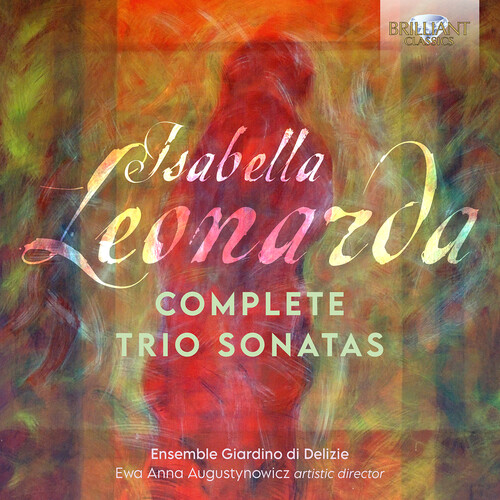Show results for
Deals
- 4K Ultra HD Sale
- Action Sale
- Alternative Rock Sale
- Anime sale
- Award Winners Sale
- Bear Family Sale
- Blu ray Sale
- Blues on Sale
- British Sale
- Classical Music Sale
- Comedy Music Sale
- Comedy Sale
- Country Sale
- Criterion Sale
- Cult Films sale
- Documentaries Sale
- Drama Sale
- Electronic Music sale
- Horror Sci fi Sale
- Kids and Family Sale
- Metal Sale
- Music Video Sale
- Musicals on Sale
- Mystery Sale
- Naxos Label Sale
- Page to Screen Sale
- Paramount Sale
- Rap and Hip Hop Sale
- Reggae Sale
- Rock
- Rock and Pop Sale
- Rock Legends
- Soul Music Sale
- TV Sale
- Vinyl on Sale
- War Films and Westerns on Sale

Complete Piano Trios
- Format: CD
- Release Date: 9/23/2022

Complete Piano Trios
- Format: CD
- Release Date: 9/23/2022
- Composers: Isabella Leonarda
- Label: Brilliant Classics
- UPC: 5028421964218
- Item #: 2511041X
- Genre: Classical
- Release Date: 9/23/2022

Product Notes
Born into a noble family, Isabella Leonarda (1620-1704) entered the Ursuline Convent in the Piedmontese city of Novara at the age of 16. Having taken holy orders she lived there for the rest of her life as a religious sister, later it's director of music and Mother Superior. She evidently showed musical promise from an early age, as the first of her published collections of music dates from as early as 1640, when she was just 20 years old. Following the Brilliant Classics portrait of Isabella Leonarda's vocal output from Cappella Artemisia directed by Candace Smith (96626), the all-female ensemble of Giardino di Delizie presents a set of 11 Trio Sonatas which was published in 1683 as the composer's Op.16. Isabella dedicated it to the Virgin Mary with a devotional preface: 'If these pieces do not please the World, I shall be content if You like them, because You appreciate the heart above the intellect.' In fact, Isabella's music greatly pleased the rest of the world at the time: according to one French collector, 'All the works of this illustrious and incomparable Isabella Leonarda are so beautiful, so charming, so brilliant, and at the same time so knowledgeable and so wise... that my great regret is not to have them all.' While the Sonatas do not exhibit the bold contrasts or rich harmony of her contemporary Corelli, they nonetheless rise above many other contemporary examples of the genre, not least in the improvisatory freedom of their writing, especially in the slow movements. They are written for two violins, violone and organ continuo, which makes them all trio sonatas in which the violone parte dialogues on equal terms with the violins.

